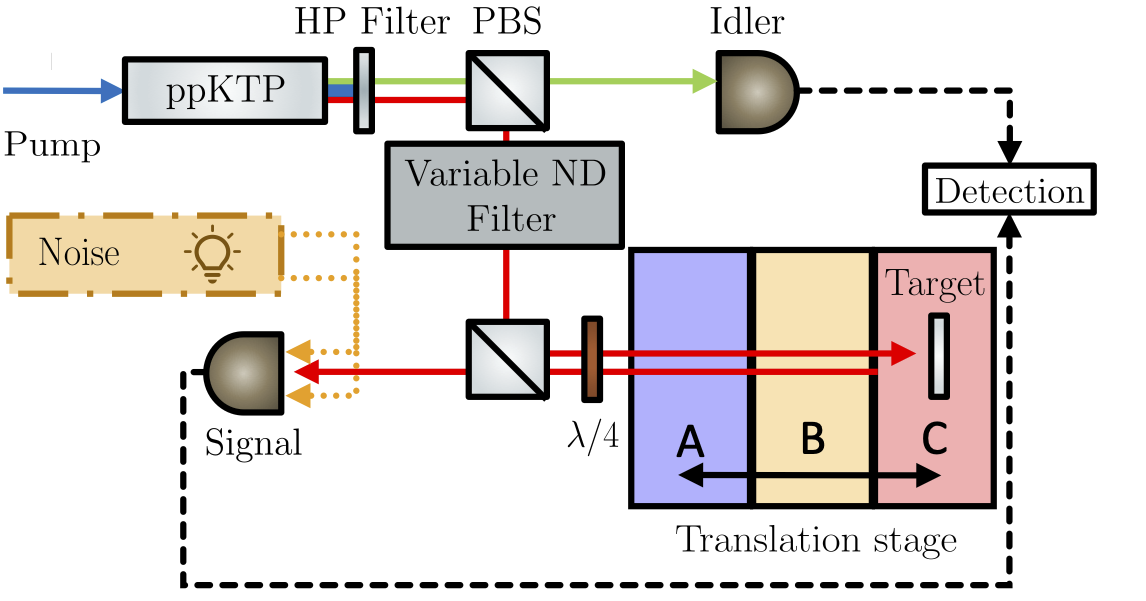Demonstration of quantum-enhanced rangefinding robust against classical jamming
Overview
Our results demonstrating a correlated pair-source to perform target detection and range-finding to show the resilience of quantum-enhanced lidar to classical jamming have been published in Optics Express.
Quantum-Enhanced LIDAR
Standard LIDAR utilises a classical light source, typically amplitude modulated laser pulses, to determine the distance to a target by measuring the time between pulse emission and detection. However, in the regime of weakly reflecting targets (or long distance operation) and large background noise, classical lidar techniques are limited when the return signal count approaches the single photon level. One approach is to increase the laser power illuminating the target, at the expense of loosing covertness in the process. Instead, quantum lidar offers an alternative approach whereby a target is illuminated by a quantum light source, in this case a correlated photon-pair source based on spontaneous parametric down-conversion. By locally detecting one of the photon pairs, we are able to determine exactly when a signal photon is emitted and use the intrinsic correlation of the photon-pair creation process to perform target detection based on coincident detection, where the delay between signal and idler detector events provides information about the target distance without requiring a modulated signal to be emitted.
Photon pair source

Quantum Illumination Source: Our experiments use photon-pairs generated by pumping a non-linear ppKTP crystal to create pairs of photons at 810 nm, with the signal photon passed through a neutral density filter to simulate target reflectivity and a moving stage used to vary distance to target. At the detector, background noise is added using an LED.
Robustness to classical jamming

Reslience to Jamming: To verify the performance of the quantum LIDAR to jamming we apply strong modulation of the background using both slow and fast-modulation. In both cases the quantum lidar is able to confidently detect the target presence or absence whilst the classical detector is unable.
Rangefinding

Rangefinding To demonstrate the range-finding performance of our system we place a target on a moving translation stage and demonstrate the ability to locate the target as it moves between regions A, B and C despite the presence of strong background modulation.
